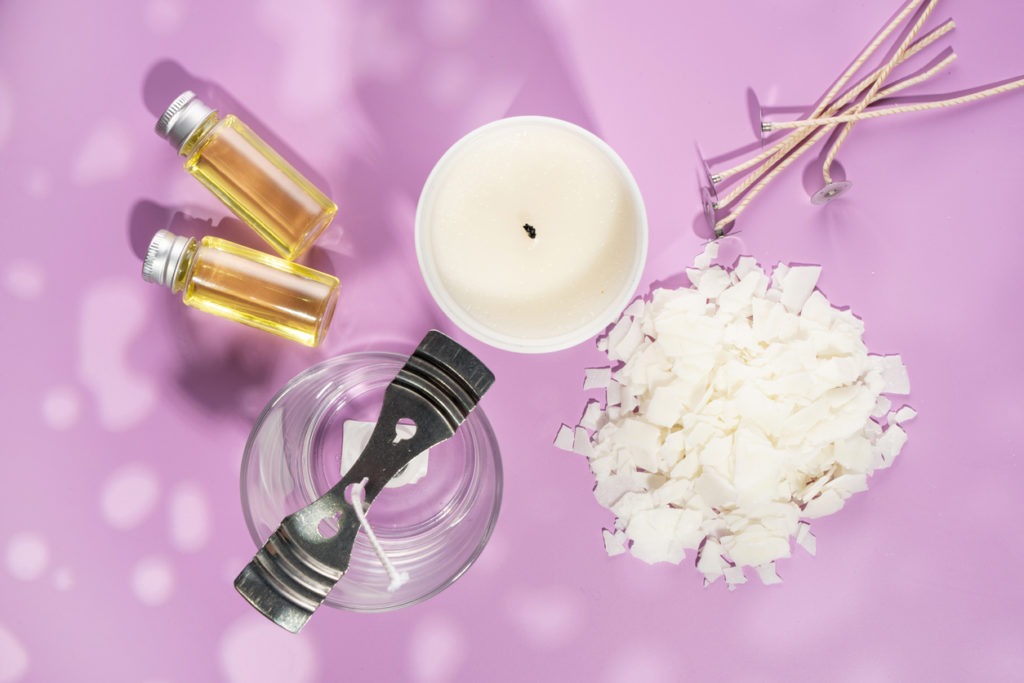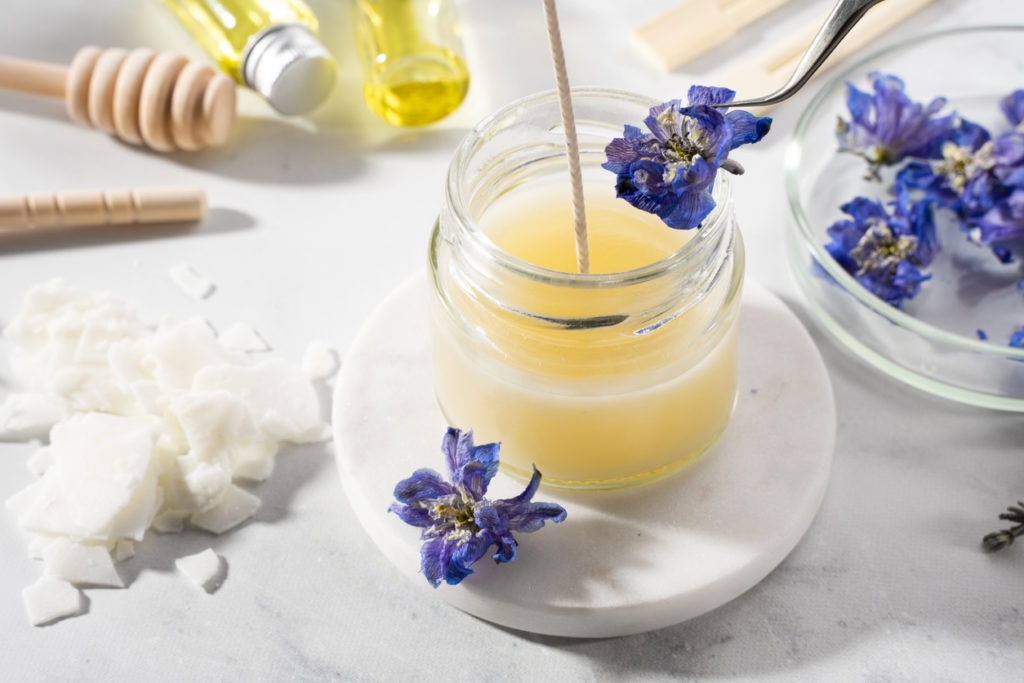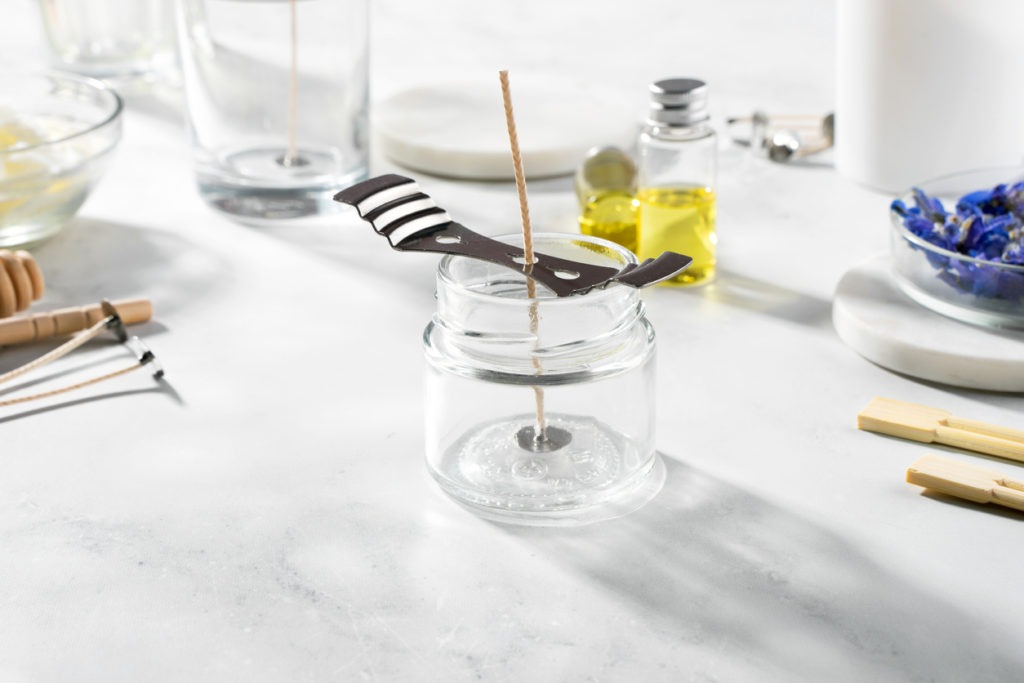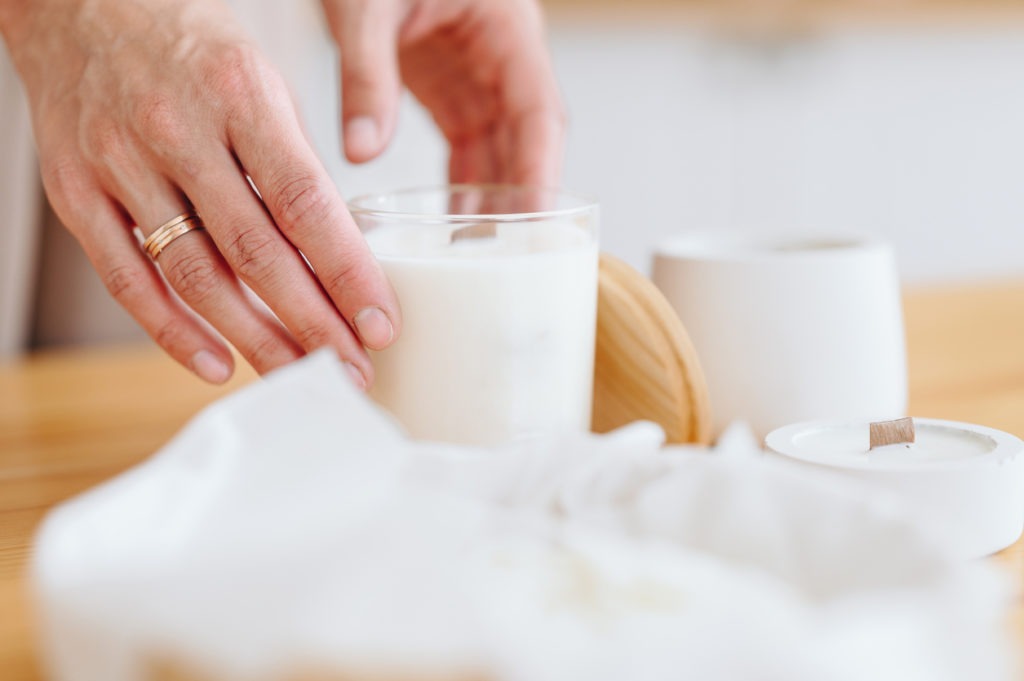While candles make every room in your house feel cozier by adding light and warmth, they don’t last forever and can be a little pricey. So it is better to know how to make one. Candles have three main parts: wax, a wick, and a container, all of which are simple to learn how to make. After creating your first candle, you can try creating various types of candles; Just make sure to select the proper wax and wick for a more challenging project. By choosing a fragrance or essential oil to scent your candle, you can further personalize it; the kinds of candles you can create are only constrained by your creativity and willingness to try new things.
Here are things you need to know about candle making.
How Does a Candle Work?
A candle is a very straightforward product that, in its most basic form, consists of a central string, called the wick, that is surrounded by a fuel source, which is now almost always some kind of wax. The surrounding fuel or wax is melted by the flame’s heat when the wick is lit, creating a liquid pool that the wick absorbs. The liquid wax evaporates due to the heat generated, and this vapor serves as the flame’s fuel. A well-designed candle’s wick and wax will burn off gradually and uniformly to maintain a steady flame and prevent dripping.
Candle-Making Materials
1. Waxes (the fuel for the candle)
Candles were traditionally made from animal fats like beef, sheep, and whale fat, but modern candles are made from cleaner, more effective waxes. The majority of contemporary candles are made primarily from paraffin wax, which is typically combined with a small amount of other wax, like stearin.
Paraffin Wax
The most crucial raw material used to make candles is paraffin wax. The majority of nations offer it in solid slabs, pellets, or flakes. It usually looks white but turns clear when liquid. It has no taste or odor and is firm to the touch. Different paraffin waxes are available with melting points ranging from 46 to 68 degrees Celsius. In temperate climates, waxes that melt at about 58°C are ideal for making candles; however, wax with a higher melting point is needed for use in hotter climates.
Stearin
Stearin, a substance found in numerous animal and plant fats, is now a crucial ingredient in candles. Its high-temperature stability makes it valuable as a hardening agent for paraffin wax. It aids in preventing the “bending” issue that paraffin wax candles can occasionally experience in hotter climates. Stearin also enhances the burning qualities of candles and aids in their release from the mold. Typically, it is provided as white flakes or granules. Although stearin is typically added to paraffin wax in amounts of around 10%, this can be increased to achieve better quality. Stearin can be used to make candles entirely.
Beeswax
A very esteemed ingredient in candle making is beeswax. It works well for creating poured and dipped candles, which are frequently marketed as premium goods. The wax tends to burn slowly and emits a calming, all-natural scent. The bee’s honeycomb is melted in hot water, strained, and allowed to cool to produce beeswax. It is currently a brownish-yellow color, but bleaching can make it lighter. The wax is a relatively soft, sticky substance with a melting point of about 64 °C, making it challenging to mold in rigid molds. About 5% of beeswax can be added to paraffin wax to increase the candles’ burning time and aesthetic appeal.
Vegetable Waxes
Wax can be extracted from and processed from a variety of plants, shrubs, and trees to be used in the production of candles. These waxes might be able to be used as the candle’s primary source of fuel in some circumstances, but they might only be able to be used sparingly to enhance the properties of another wax in others. Because they are made from renewable resources and frequently burn more cleanly than paraffin wax, some vegetable waxes (like soy) are marketed as healthy and sustainable alternatives to paraffin wax.
Other waxes and additives
Specialist suppliers for candle-making offer a variety of specialty waxes and additives, but none of them are initially necessary. They consist of:
- Use a wax that is dipping and carving-soft enough to model and carve at low temperatures.
- Microcrystalline waxes can be used to change the hardness of paraffin wax.
- Over-dipping wax coats a candle with a high-gloss finish.
2. Wick
A candle’s wick is a crucial component, so it should be chosen carefully. The majority of contemporary wicks are constructed from cotton strands that have been braided. For the majority of candles, a flat braid is sufficient, but square and round braided wicks are also made. When creating container candles, some wicks also have a paper or wire stiffener.
Wicks can be purchased directly from wholesalers or craft suppliers in nations with well-established candle-making industries. If necessary, wicks can also be made by hand. When the wick is lit, the flame ought to produce enough heat to melt a little bit of wax at the candle’s top. Capillary action then draws the liquid wax up towards the flame, where it burns and vaporizes. A properly sized wick will curl into the flame’s hotter region when lit and burn away at the tip to produce a clear, bright flame.
The basic principle in selecting a wick is:
The wick gets thicker as the candle’s diameter increases. A large flame will melt the wax too quickly if the wick is too thick, resulting in dripping on the candle’s outer edge. If the wick is too thin, on the other hand, the flame won’t be able to produce enough heat to vaporize enough wax and will likely “drown” in its wax pool. Beeswax, for example, requires a thicker wick than materials with a lower viscosity because it is viscous when liquid. Generally speaking, a thicker wick is needed the more viscous the liquid fuel is. Usually, some trial-and-error testing is required.
3. Dyes and Scents
Color and scent can be used to make candles more appealing when they are being sold as decorative items rather than as a source of light.
Candle Dyes
Candle dyes can be purchased as solid blocks or as a powder that can be mixed right into melting wax. There is a wide variety of colors available, and suppliers will provide information about the quantities needed because these will change depending on the dye concentration. Before making candles, it is a good idea to mix small test samples of color, especially since some colors tend to change as they cool. Some colored candles tend to fade over time, especially when exposed to bright light.
Scented Candles
Candles with scents are now a well-known and well-liked product. Some nations have vendors who sell fragrances made specifically for candles. During production, these liquids are poured into the melted wax. A scented candle is a result, and when it is lit, it typically releases more fragrance. The ‘throw’ refers to the amount of scent released from the wax. Candles can be scented with essential oils, and you can also experiment with other locally accessible natural fragrances.
Heating Methods
Electricity
If it is available, electricity is the best type of heat source because it can be easily controlled. Heating elements can be attached to the bottom of a tank of the appropriate size or a domestic cooker can be used. Water jackets that are heated electrically can also be used.
Gas
Gas burners like those found in domestic gas cookers, tanks, or pots can be heated. The safest method is to use a double boiler or water bath. If heating wax directly in a container, make sure the container has a thick bottom to prevent burning and take safety measures to prevent hot wax from coming into contact with the gas flame. It might also be thought about using a water jacket that is heated by gas.
Solid Fuel
Solid fuel should only be used in situations where there are no other fuel options. Wax must be handled with extreme caution to avoid spilling onto an open flame.
Safety Heating Methods
It is crucial to be aware of some important safety precautions when heating wax. Overheating the wax is not permitted. Wax begins to smoke and emit foul and hazardous fumes at high temperatures (typically above 150°C). Wax reaches its “flash point” and can spontaneously ignite at higher temperatures. Liquid wax can also be ignited by an open flame. When lit, liquid wax can start a serious fire that is hard to put out. If a fire does break out, the heat source should be shut off right away, and if at all possible, the wax should be covered with a metal lid or a damp cloth to keep the flames from getting oxygen. Never use water to try to put out a fire that is burning wax because doing so will only make it worse.
If the wax melting pot is not heated directly, the likelihood of overheating can be significantly reduced. This can be accomplished by submerging the melting pot into a larger pot of hot water, which will warm the wax. It is referred to as a double boiler. Make sure the water doesn’t boil away even when using this method.
Containers for Heating Wax
Aluminum or stainless steel containers are best because they won’t rust. Iron or steel can also be used, except beeswax, for which iron equipment is inappropriate. Avoid using copper and brass because they promote oxidation. Large cooking pots are ideal as a starting point, but metalworkers can create specially designed containers as needed.
Methods for Measuring and Controlling Temperature
Without a way to gauge the wax’s temperature, you can begin making candles, but for effective candle making, you’ll need a thermometer or, even better, a thermostatically controlled heater. The best thermometer is a cooking thermometer because it can measure temperatures much higher than boiling water. A thermometer shouldn’t be heated above its upper limit because doing so will likely cause it to become very inaccurate over time.
A thermostat, if one is available, is a very effective way to regulate the temperature of the wax, provided that it has been precisely calibrated. The wax can be heated to the desired temperature and maintained at that temperature without the need for frequent manual checking and adjusting by using a thermostat in conjunction with some type of electrical heating apparatus.
Methods of Production
Four fundamental candle-making techniques are especially well-suited for small-scale production:
- Dipping
- Pouring
- Molding (or casting)
- Container candles
Dipping
The simplest way to make candles is by dipping them. It can be used as a production process to produce large quantities of candles in a variety of sizes and colors, or it can be used to manually make a small number of candles using very basic tools.
Pouring
As it involves the layer-by-layer building of candles, pouring candles is very easy and, in theory, similar to dipping. However, because only one wick can be poured onto at a time, pouring takes longer than dipping. Because of this, it is typically only utilized for very small-scale production where there is a lack of equipment.
Molding (or Casting)
A common technique for creating decorative and unique-shaped candles is candle molding (also known as casting). A large number of molds must be purchased to produce candles in large quantities because each candle needs time to cool in its mold.
Container Candles
Small candles placed in a heat-resistant container are also referred to as votive candles or container candles. They are widely used as decorative items, very easy to make, and typically sold as scented candles. They are made from a heat-resistant container filled with wax and a central wick in their most basic form.
Easy Steps of Candle Making
Step 1: Measure the Wax
Make sure you have a clean, flat surface to work on before you start making candles. Using newspaper or paper towels will also help to protect the area. Anything you don’t want to be waxed should be moved.
Calculate how much wax you’d need to fill your container, then multiply it by two. You will need to melt that much wax.
Step 2: Melt the Wax
The wax should be poured into the double boiler, and it should melt for 10 to 15 minutes while being stirred frequently.
Step 3: Add Fragrance Oils
The time has come to add fragrance oils after your candle wax has melted. Simply pour it into the wax that has already melted and stir.
Step 4: Attach the Wick
Before you pour the wax in, the wick needs to be fastened to the base of your container. By quickly sticking the wick to the base of the container after quickly dipping it in the melting wax, you can attach the wick. Allow the wax to cool and harden for five minutes.
Step 5: Pour the Wax
Let the wax cool for a few minutes before adding it to your container. It’s time to start pouring when the thermometer reads 140 degrees.
The wax should then be added to your container slowly. Hold the wick firmly in place without pulling. Keep a little wax in the boiler so you can later top off your candle.
Step 6: Secure the Wick
You must fix your wick in place to stop it from swaying in the molten wax. Cross two chopsticks across the container’s top. To keep the wick centered while the wax hardens, sandwich it between the two. At room temperature, let the wax set for four hours.
Step 7: Add More Wax
Simply reheat your candle and add the remaining wax if the top has become hardened with unsightly flaws like cracks or holes. Allow becoming more solid.
Step 8: Cut the Wick
Less than half an inch should be the length of your candle wick. Trim the wick if the candle flickers or has a high flame when lit.
Conclusion
These are the important things you need to know when getting started with candle making. Now that you have an idea to create candles, you can try to make them as decorations for your own home, or even better, as a kind present for a friend.






